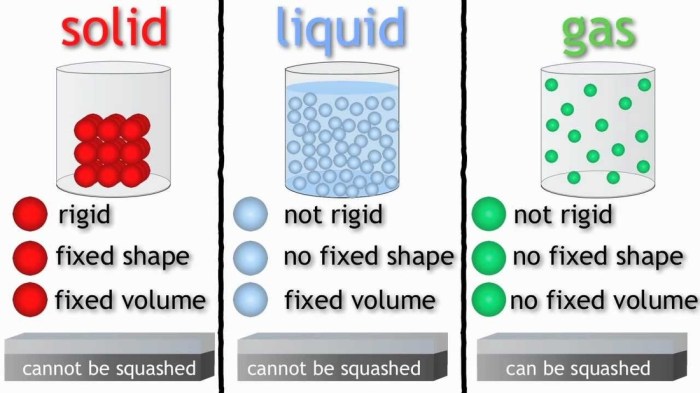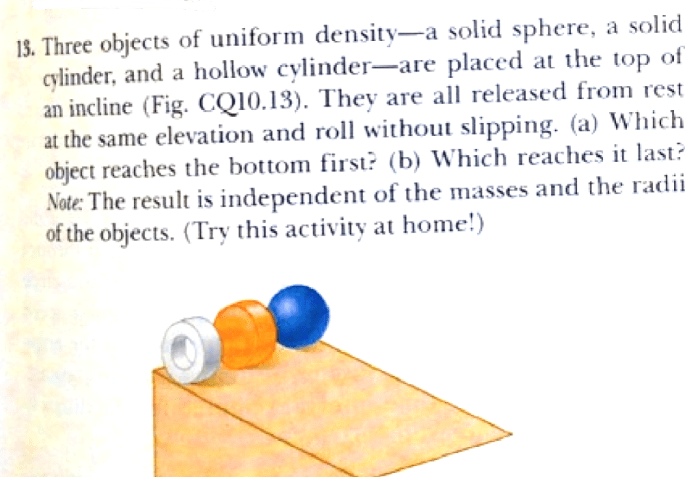Three objects of uniform density a solid sphere – In the realm of physics, the study of three objects of uniform density, particularly a solid sphere, unveils a fascinating array of properties and behaviors. This discourse delves into the intricacies of mass, volume, center of mass, moment of inertia, gravitational force, and buoyancy, providing a comprehensive understanding of this fundamental concept.
As we embark on this exploration, we unravel the relationship between mass and volume, uncovering the formula that empowers us to determine the mass of a solid sphere based on its volume. Furthermore, we pinpoint the center of mass, a pivotal point that governs the sphere’s stability and motion.
The moment of inertia, a measure of the sphere’s resistance to rotational motion, is also elucidated.
Mass and Volume

For objects of uniform density, the mass (m) is directly proportional to the volume (V) and the density (ρ): m = ρV. The density is a constant that represents the mass per unit volume of the material.
For a solid sphere, the formula for calculating the mass (m) given its volume (V) is: m = (4/3)πr³ρ, where r is the radius of the sphere.
Example: To calculate the mass of a solid sphere with a radius of 10 cm and a density of 1 g/cm³, we use the formula: m = (4/3)π(10 cm)³(1 g/cm³) = 4188.79 g.
Center of Mass
The center of mass of a solid sphere is the geometric center of the sphere, located at a distance of r/2 from the center along any diameter.
The center of mass is a crucial point in understanding the stability and motion of the sphere. It represents the point where the entire mass of the sphere is concentrated, making it the point at which all external forces act.
Moment of Inertia: Three Objects Of Uniform Density A Solid Sphere

The moment of inertia (I) of a solid sphere about its central axis is given by the formula: I = (2/5)mr², where m is the mass of the sphere and r is its radius.
The moment of inertia is a measure of the resistance of the sphere to rotational motion. A higher moment of inertia indicates a greater resistance to changes in rotational velocity.
Gravitational Force

The gravitational force (F) between two solid spheres with masses m₁ and m₂ and radii r₁ and r₂, respectively, is given by the formula: F = G(m₁m₂/r₁²+r₂²) where G is the gravitational constant.
Factors affecting the gravitational force include the masses of the spheres and the distance between their centers.
Buoyancy

Buoyancy is the upward force exerted by a fluid that opposes the weight of a partially or fully immersed object. For a solid sphere submerged in a fluid, the buoyant force (F) is given by the formula: F = ρVg, where ρ is the density of the fluid, V is the volume of the submerged portion of the sphere, and g is the acceleration due to gravity.
Factors affecting the buoyant force include the density of the fluid, the volume of the submerged portion of the sphere, and the acceleration due to gravity.
Popular Questions
What is the formula for calculating the mass of a solid sphere?
Mass = (4/3)πr³ρ, where r is the radius of the sphere and ρ is its density.
How do you locate the center of mass of a solid sphere?
The center of mass of a solid sphere is located at its geometric center.
What factors affect the gravitational force between two solid spheres?
The gravitational force between two solid spheres is affected by their masses and the distance between their centers.